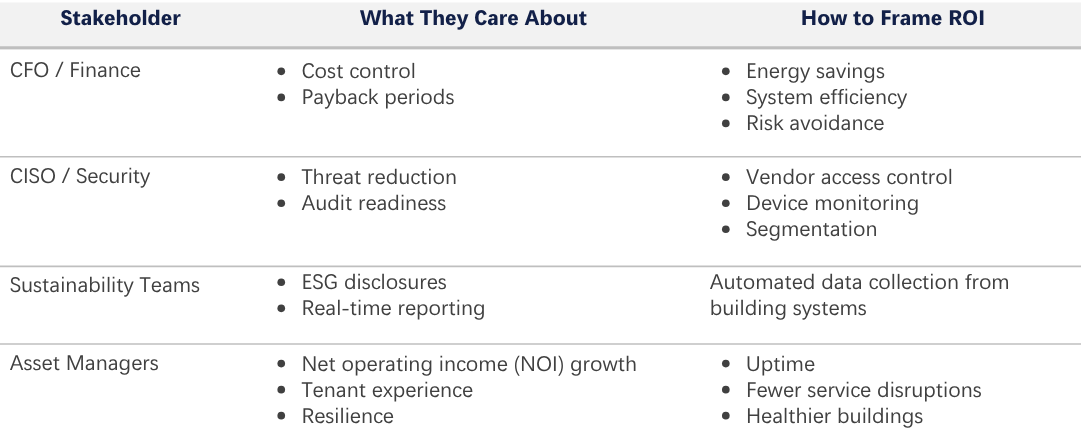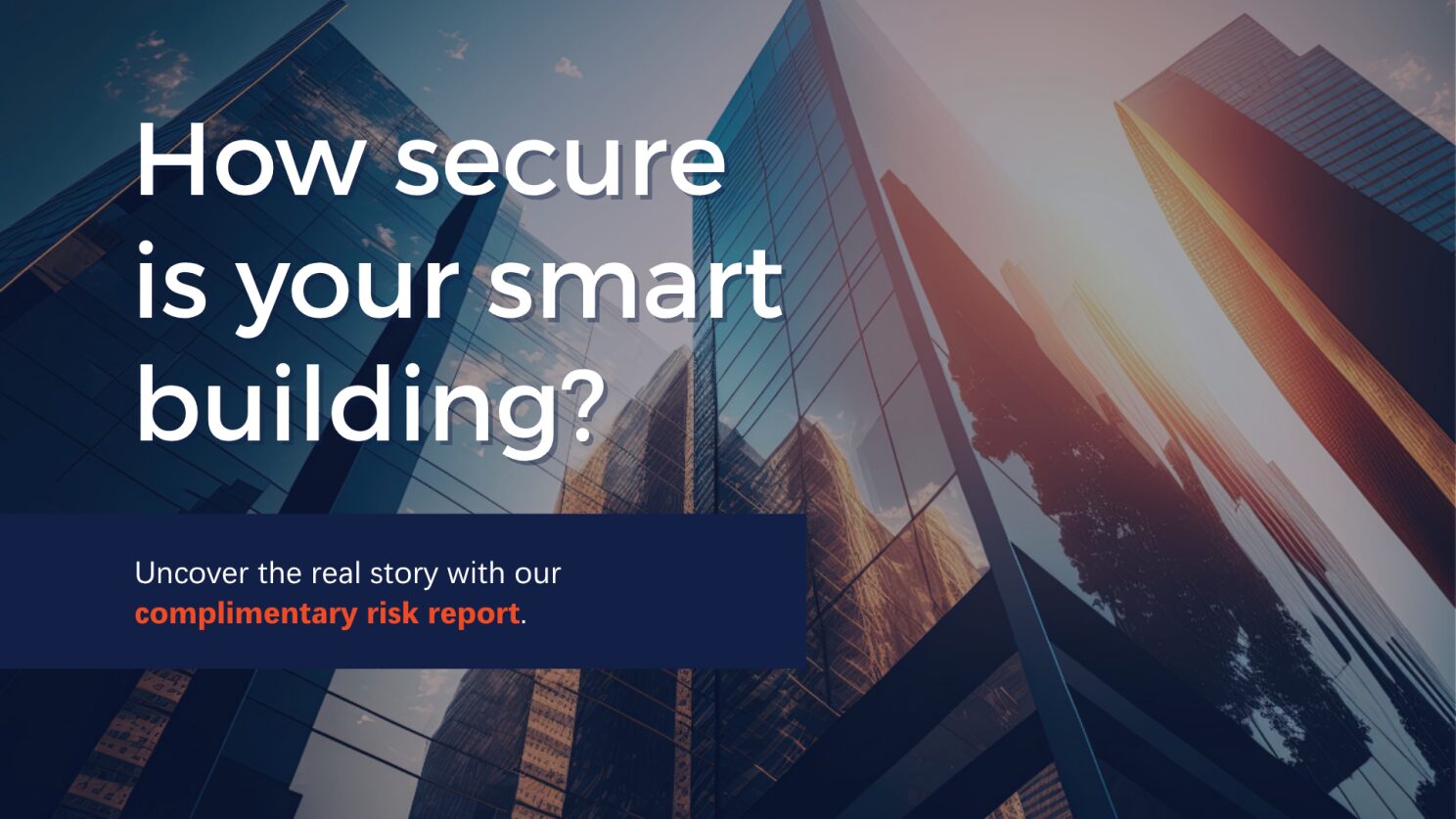
by Lachlan MacQuarrie, Vice President of Customer Success, Intelligent Buildings
The Smart Building Shift Is Underway, but What’s the ROI?
From energy dashboards to cybersecurity platforms, access control integrations to ESG data pipelines—smart building technologies are transforming commercial real estate (CRE). For CIOs and CTOs leading this digital charge, there’s no shortage of innovation.
But in today’s business environment, innovation alone isn’t enough. Boards, investors, and executive stakeholders are all asking the same question: “What’s the return?”
It’s a fair question—and one that’s often tough to answer. Unlike traditional informational technology (IT) projects, the return on investment (ROI) of smart building technology initiatives can be more nuanced. The value isn’t just in dollars saved, but in risks reduced, systems aligned, operations streamlined, and data unlocked for strategic insight.
CIOs and CTOs need a way to tie their digital strategy to measurable outcomes.
The ROI Challenge in Smart Buildings
Smart buildings aren’t just about technology, they’re about outcomes. As a CIO or CTO in CRE, your role is no longer just about what you deploy. It’s about how deployment impacts operations, risk, sustainability, and business value. Innovation is the starting point.
Return on innovation is the destination.
Traditional ROI metrics don’t always apply in CRE’s evolving landscape. You’re dealing with decades-old systems, complex vendor networks, and operational technology (OT) environments that don’t fit neatly into IT frameworks.
Consider these challenges:

This is where the pressure mounts—not only to modernize, but to justify each step of your smart building journey. That’s why leading CRE organizations are reframing ROI to reflect what truly matters across digital infrastructure.
How to Communicate ROI Internally
Proving ROI doesn’t mean simplifying the strategy, it means translating it for every audience. Even when the value is there, it still needs to be communicated in a way that resonates with stakeholders.
We help CIOs and CTOs reframe the conversation by focusing on outcomes that matter across functions.

Key Areas Where ROI Is Proven
Through our complete suite of services, Intelligent Buildings helps CRE leaders define, measure, and communicate the return on digital investment. We’ve found that focusing on the following areas can create both immediate and long-term business value.
1. Energy Efficiency & Uptime Improvements
Energy consumption is one of the most tangible and trackable benefits of smart building strategies. When your HVAC, lighting, and other systems are connected, monitored, and optimized, the savings add up fast.
We work with clients to:
- Benchmark pre- and post-optimization energy usage
- Track and verify runtime reductions
- Reduce override drift that leads to waste
- Identify systems in need of recommissioning or reset
Uptime also improves when fault detection and alerting are part of the equation. Preventing one major outage can protect tenant satisfaction, reduce service calls, and preserve NOI.
2. IT/OT Integration Progress
For decades, building systems were the domain of engineering and facilities. But in today’s environment, IT is increasingly responsible for OT as well. Proving ROI here means showing that the organization is becoming:
- More standardized across properties
- More aligned in terms of IT policies and OT practices
- More collaborative across internal departments
We help teams benchmark their IT/OT alignment and provide tools to measure:
- Asset visibility across portfolios
- Adoption of access control and monitoring policies
- Reduction in shadow systems and unmanaged networks
- Integration of building systems with corporate IT tools
3. ESG Alignment Through Data
Environmental, Social, and Governance (ESG) performance is under the microscope—from regulators, investors, and tenants alike. CIOs and CTOs are now central to the data infrastructure that enables ESG reporting. The value of this infrastructure includes:
- Real-time energy and carbon tracking
- Water use, indoor air quality, and wellness metrics
- Occupancy and space utilization data
- Automation of GRESB, LEED, and SEC disclosures
We support this by aggregating and visualizing key environmental data from building systems, helping stakeholders move from manual compliance to automated insight.
4. Cybersecurity & Risk Reduction
Cyber risk is often treated as a binary: breached or not. But the real ROI in OT cybersecurity is about reducing exposure and improving resilience. Here’s how we help quantify that:
- Mapping OT systems and identifying vulnerabilities
- Tracking vendor access control improvements
- Demonstrating policy alignment with IT security frameworks (e.g., NIST, SOC 2)
- Monitoring real-time device status and network segmentation
